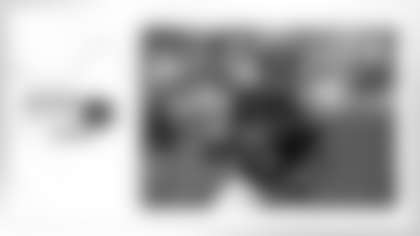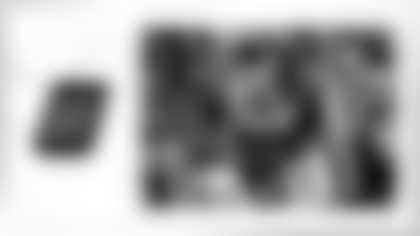The expansion of jersey numbers at certain positions was one of six new rule proposals approved Wednesday by NFL owners.
The new rule, which was proposed by the Kansas City Chiefs, will allow running backs, wide receivers, tight ends, linebackers and defensive backs to wear a wider variety of numbers, including single digits.
Here are the new numbers that each position group will be permitted to wear while still being able to don the previous ones, which are in parentheses:
Running backs: 1-19, 80-89 (20-49)
Wide receivers: 1-9, 20-49 (10-19, 80-89)
Tight ends: 1-39 (40-49, 80-89)
Linebackers: 1-39 (40-59, 90-99)
Defensive backs: 1-19 (20-49)
The following positions are unaffected by the new rule:
Quarterbacks: 1-19
Offensive linemen: 50-79
Defensive linemen: 50-79, 90-99
Punters and kickers: 1-19
The difficulty of assigning numbers by position increased last year when practice squads expanded from 10 to 16 players. It's especially challenging for the Bears, whose 14 retired numbers are the most of any NFL team.
Only time will tell if any Bears players change numbers. But it's interesting to note that:
• Receivers Anthony Miller (Memphis) and Darnell Mooney (Tulane) and linebacker Roquan Smith (Georgia) all wore No. 3 in college. They could be tempted to switch to a single digit, but it won't be No. 3 because that number is retired by the Bears in honor of Hall of Fame fullback Bronko Nagurski.
• Receiver Allen Robinson II wore No. 8 at Penn State and could switch to that number. Backup quarterback Tyler Bray wore No. 8 last year.
• There are only four single-digit numbers currently available with the Bears: Nos. 1, 4, 6 and 8. Nos. 5 and 7 have been retired to honor Hall of Famers George McAfee and George Halas, respectively, while Nos. 2 and 9 belong to kicker Cairo Santos and quarterback Nick Foles, respectively.
Safety Eddie Jackson, who has worn No. 39 since joining the Bears in 2017, would seemingly be a candidate for No. 4, the number he wore at Alabama.
Interestingly, No. 7 was worn by two Bears Hall of Famers: Halas (1920-29) and defensive end Ed Sprinkle, who is scheduled to be inducted posthumously this year.
The last Bears to wear Nos. 1, 4 and 6 were, respectively, kicker Cody Parkey in 2018, quarterback Chase Daniel in 2018-19 and quarterback Mark Sanchez in 2017.
• The new rule will allow linebacker Danny Trevathan to switch from No. 59—the number he's worn in all nine of his NFL seasons with the Broncos (2012-15) and Bears (2016-20)—to No. 22, the number he wore at Kentucky. Of course, Trevathan would probably have to "purchase" the number from Bears cornerback Kindle Vildor, a 2020 fifth-round pick from Georgia Southern who wore No. 22 last year as a rookie.
A rigid numbering system didn't exist in the NFL until 1973, which explains why Bears Hall of Fame quarterback Sid Luckman was able to wear No. 42 in the 1940s, Hall of Fame running back Red Grange was permitted to don No. 77 in the 1920s and '30s, etc.
A handful of tweaks have been made since 1973, the most noteworthy of which occurred in 2004 when receivers were allowed to wear numbers in the 10-19 range. Last season the Bears' top three receivers all wore numbers in that range: Robinson (12), Mooney (11) and Miller (17).
All proposals required a "yes" vote from 24 of the league's 32 owners to pass. The other five new rules that were approved Wednesday will:
• Eliminate overtime in the preseason.
• For the 2021 season only, establish a maximum number of nine players on the kickoff return team in the 15-yard setup zone, seemingly making it easier to recover onside kickoffs.
• Permit the replay official and designated members of the officiating department to provide certain objective information to on-field officials.
• Ensure the enforcement of all accepted penalties committed by either team during successive extra-point attempts.
• Add a loss of down for a second forward pass from behind the line and for a pass thrown after the ball returns behind the line.
A rule proposed by the Philadelphia Eagles enabling teams to maintain possession of the ball after a score by substituting one fourth-and-15 play from their own 25-yard line for an onside kick attempt was tabled. It's expected to be revisited by owners next month.







